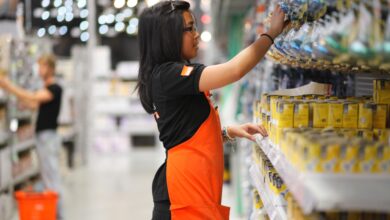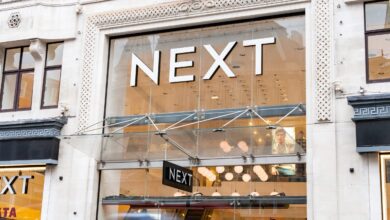
Register to get 1 free article
Reveal the article below by registering for our email newsletter.
Want unlimited access? View Plans
Already have an account? Sign in
The Thanksgiving weekend of 2023, including Cyber Monday, saw $38 billion in online sales in the US, while e-commerce in the UK is forecast to exceed 38% of all retail sales by 2025. That’s an awful lot of packages being delivered to homes.
Brands that sell a lot (or all) of their products online will tend to create packaging with home delivery in mind. The preference is for SIOC (shipped in own container) packaging, where brands provide and ship in their own containers without any additional overwrap, as it reduces cost, waste and emissions – even for brands selling via online marketplaces like Amazon.
The question, however, is one of offering the right level of brand aesthetics and messaging awareness at the same time as creating packaging that is robust and rugged enough for the rigours of transportation and home delivery. And for all this, remaining sustainable.
If a shopper is in-store, the ‘moment of truth’ for the packaging takes place there and then. They can pick up and examine the box before committing to a purchase and the package on shelf is placed so the consumer sees the attractive front face.
But the same isn’t true when buying online – the ‘selling face’ might be any face of the packaging – top, bottom, back or front face. Most of the time, moreover, the first time they see the box is when it arrives.
Brand equity and labelling
Many of those volume sellers who ship thousands of e-commerce packages every week have given this a lot of thought.
A bottle of Bacardi rum, for example, is too big to fit through a letterbox and can’t really have obvious branding on the outside of the box as it sits unattended on the doorstep. So they put the branding on the inside instead. Henry’s Razors completely redesigned its SIOC packaging to ensure it was robust enough for home delivery while keeping its unique branding in place.
SIOC packaging can be sustainable as well as ensuring brand equity. It’s also often the same packaging used for in-store purchases.
That means brands have to label correctly. All packaging needs to have end-of-life labelling – including transportation packaging such as corrugated boxes, large envelopes and bags. Many consumers assume corrugated boxes and large envelopes can be recycled kerbside, but it isn’t always the case.
In fact, some commonly-used laminates and coatings on boxes and envelopes can make then non-recyclable and will contaminate the recycling stream if not clearly labelled.
Thinking about sustainability in lower volumes
Brands and retailers that don’t offer large e-commerce volumes tend to think only of logistics when it comes to their packaging – is it too big a box and are they paying for shipping fresh air? How does the logistics chain differ when they’re talking about a few products being delivered individually to consumers’ homes versus the hundreds they deliver in a single shipment to a store?
However, there is a strong sustainability argument that they too should be thinking in terms of making their primary packaging SIOC-ready. Very few consider it, and it doesn’t always cost more, but it can ensure that sales via marketplaces, for example, won’t require extra packaging.
In many cases, they (like much of the packaging industry) are still catching up with the transformation wrought by the 2020 pandemic and the surge in home delivery. It might be a nine-month turnaround to create new packaging for a food item, but for domestic appliances it might take 24 months or even more.
What has become very evident since Covid is that the overall packaging experience for online retail is still lagging behind – especially for sustainability. It’s a notably different experience when buying in-store as opposed to not even seeing the package until it appears on your doorstep.
When buying a product online, there is a wealth of information available. More, in fact, than if you buy on the high street. Between the brand or retailer’s own website, Amazon, Google and potentially hundreds of consumer reviews, a shopper can learn everything about what the product does, how it acts under pressure and how sustainable (or not) it is.
However, compare that to the amount of information available about the packaging. It’s rare indeed to even be able to see the box or container the product comes in, let alone whether or not it’s recyclable and what the brand has done to make that package as sustainable as possible.
And yet, consumers want that information. Research last year found that 56% of 1,036 Gen Z consumers are less inclined to buy from a retailer again or would look for a different retailer in the future if delivery packaging wasn’t sustainable. Similarly, half of online shoppers in this generation take notice of on-pack sustainability claims.
Surely this has to be the next step, along with mandatory end-of-life labelling. In the same way that a shopper can compare products online and choose one based on its sustainability credentials, it would be nice to offer the same level of granularity on the packaging they come in. Shoppers might even want to choose a product on its packaging sustainability credentials.







